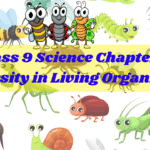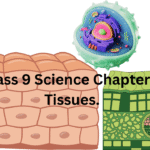Heredity and Evolution – Short Notes
1. Introduction
- Heredity: The passing of traits from parents to offspring.
- Variation: The differences in traits among individuals of a species.
- Genetics: The study of heredity and variation.
2. Accumulation of Variation during Reproduction
- Variations arise during DNA copying (reproduction) and due to errors (mutations).
- Sexual reproduction produces more variations than asexual reproduction due to:
- DNA copying (meiosis) before gamete formation.
- Fusion of gametes from two different parents.
3. Mendel’s Experiments (Inheritance)
- Gregor Mendel (Father of Genetics) used pea plants to study inheritance.
- He proposed laws of inheritance based on his experiments.
Key Terms:
- Gene: Unit of inheritance.
- Allele: Different forms of a gene (e.g., T for tall, t for dwarf).
- Genotype: Genetic makeup (e.g., TT, Tt, tt).
- Phenotype: Physical appearance (e.g., tall, dwarf).
- Dominant Trait: Expresses itself in both homozygous (TT) and heterozygous (Tt) conditions.
- Recessive Trait: Expresses only in homozygous condition (tt).
- Homozygous: Both alleles same (TT or tt).
- Heterozygous: Alleles different (Tt).
Monohybrid Cross (Cross for one trait):
- Parental Cross: TT (Tall) × tt (Dwarf)
- F1 Generation: All Tt (Tall)
- F2 Generation: Phenotypic ratio = 3 Tall : 1 Dwarf
Genotypic ratio = 1 TT : 2 Tt : 1 tt
4. Sex Determination
- Process by which sex of a child is determined.
- Humans have 23 pairs of chromosomes (22 autosomes + 1 pair sex chromosomes).
- Male: XY sex chromosomes
- Female: XX sex chromosomes
- Sex of child depends on father:
- If sperm carrying X chromosome fertilizes egg → Girl (XX)
- If sperm carrying Y chromosome fertilizes egg → Boy (XY)
5. Evolution
- Evolution: The gradual change in organisms over generations leading to new species.
- Charles Darwin proposed Natural Selection as the mechanism of evolution.
- Organisms with variations suited to the environment survive and reproduce.
Evidences for Evolution:
- Homologous Organs: Same structure, different functions (e.g., forelimbs of humans, whales, bats). Indicates common ancestry.
- Analogous Organs: Different structure, same function (e.g., wings of birds and insects). Indicates convergent evolution.
- Fossils: Remains of ancient organisms found in rocks. Help in tracing evolutionary history.
6. Speciation
- Formation of new species from existing ones.
- Causes:
- Genetic drift: Accidental change in gene frequency.
- Natural selection
- Geographical isolation: Physical barriers (rivers, mountains) prevent interbreeding.
7. Human Evolution
- Humans evolved from ape-like ancestors.
- Key stages:
- Dryopithecus (ape-like)
- Ramapithecus (more man-like)
- Homo habilis (tool-maker)
- Homo erectus (upright man)
- Homo sapiens (modern man)
Quick Revision Table: Heredity vs. Variation
| Heredity | Variation |
|---|---|
| Inheritance of traits | Differences in traits |
| Ensures continuity | Provides diversity |
| Controlled by genes | Caused by mutations, recombination |
Important Diagrams
- Monohybrid cross (F1 and F2 generation)
- Sex determination in humans
- Homologous and analogous organs
- Evolutionary tree of humans
Key Terms
- DNA: Carrier of genetic information.
- Mutation: Sudden change in DNA.
- Fossil: Preserved remains of ancient organisms.
- Natural Selection: Survival of the fittest.
- Speciation: Formation of new species.
Exam Tip: Focus on Mendel’s experiments, sex determination, and evolution evidences. Practice genetic crosses and diagrams!
कक्षा 10 विज्ञान – अध्याय 8: आनुवंशिकता एवं जैव विकास – संक्षिप्त नोट्स
1. परिचय
- आनुवंशिकता: माता-पिता के लक्षणों का संतानों में स्थानांतरण।
- विविधता: एक ही जाति के सदस्यों में लक्षणों के अंतर।
- आनुवंशिकी: आनुवंशिकता और विविधता का अध्ययन।
2. जनन के दौरान विभिन्नताओं का संचय
- विभिन्नताएँ डीएनए की प्रतिलिपि बनने (जनन) और त्रुटियों (उत्परिवर्तन) के कारण उत्पन्न होती हैं।
- लैंगिक जनन में अलैंगिक जनन की तुलना में अधिक विभिन्नताएँ होती हैं, क्योंकि:
- युग्मक बनने से पहले डीएनए की प्रतिलिपि बनना (अर्धसूत्री विभाजन)।
- दो अलग-अलग जनकों के युग्मकों का संलयन।
3. मेंडल के प्रयोग (अनुवांशिकता)
- ग्रेगर जॉन मेंडल (आनुवंशिकी के जनक) ने मटर के पौधों पर अध्ययन किया।
- उन्होंने अपने प्रयोगों के आधार पर वंशागति के नियम प्रस्तावित किए।
मुख्य शब्द:
- जीन: वंशागति की इकाई।
- एलील: एक जीन के विभिन्न रूप (जैसे, T लंबेपन के लिए, t बौनेपन के लिए)।
- जीन型 (Genotype): आनुवंशिक संरचना (जैसे, TT, Tt, tt)।
- लक्षण प्ररूप (Phenotype): शारीरिक रूप (जैसे, लंबा, बौना)।
- प्रभावी लक्षण: समयुग्मजी (TT) और विषमयुग्मजी (Tt) दोनों में व्यक्त होता है।
- अप्रभावी लक्षण: केवल समयुग्मजी अवस्था (tt) में व्यक्त होता है।
- समयुग्मजी: दोनों एलील समान (TT या tt)।
- विषमयुग्मजी: एलील भिन्न (Tt)।
एकसंकर संकरण (एक ही लक्षण के लिए):
- जनक पीढ़ी: TT (लंबा) × tt (बौना)
- F1 पीढ़ी: सभी Tt (लंबा)
- F2 पीढ़ी:
लक्षण प्ररूप अनुपात = 3 लंबा : 1 बौना
जीन型 अनुपात = 1 TT : 2 Tt : 1 tt
4. लिंग निर्धारण
- वह प्रक्रिया जिसके द्वारा बच्चे का लिंग निर्धारित होता है।
- मनुष्यों में 23 जोड़े गुणसूत्र होते हैं (22 अलिंगसूत्र + 1 जोड़ा लिंग गुणसूत्र)।
- नर: XY लिंग गुणसूत्र
- मादा: XX लिंग गुणसूत्र
- बच्चे का लिंग पिता पर निर्भर करता है:
- यदि X गुणसूत्र वाला शुक्राणु अंडे को निषेचित करे → लड़की (XX)
- यदि Y गुणसूत्र वाला शुक्राणु अंडे को निषेचित करे → लड़का (XY)
5. जैव विकास (Evolution)
- जैव विकास: पीढ़ियों के दौरान जीवों में धीरे-धीरे परिवर्तन जिससे नई प्रजातियाँ उत्पन्न होती हैं।
- चार्ल्स डार्विन ने प्राकृतिक वरण को विकास का कारण प्रस्तावित किया।
- पर्यावरण के अनुकूल विभिन्नताओं वाले जीव जीवित रहते हैं और प्रजनन करते हैं।
विकास के प्रमाण:
- समरूप अंग: समान संरचना, भिन्न कार्य (जैसे, मनुष्य, व्हेल, चमगादड़ की अग्रपंख)। सामान्य पूर्वज का संकेत।
- असमरूप अंग: भिन्न संरचना, समान कार्य (जैसे, पक्षियों और कीटों के पंख)। अभिसारी विकास का संकेत।
- जीवाश्म: प्राचीन जीवों के अवशेष चट्टानों में मिलते हैं। विकासवादी इतिहास जानने में सहायक।
6. प्रजाति उद्भव (Speciation)
- मौजूदा प्रजातियों से नई प्रजातियों का निर्माण।
- कारण:
- आनुवंशिक प्रवाह: जीन आवृत्ति में आकस्मिक परिवर्तन।
- प्राकृतिक वरण
- भौगोलिक अलगाव: भौतिक बाधाएँ (नदियाँ, पहाड़) संकरण रोकती हैं।
7. मानव विकास
- मनुष्य वानर जैसे पूर्वजों से विकसित हुए।
- मुख्य चरण:
- ड्रायोपिथिकस (वानर जैसा)
- रामापिथिकस (अधिक मानव जैसा)
- होमो हैबिलिस (उपकरण निर्माता)
- होमो इरेक्टस (सीधा खड़ा होने वाला मानव)
- होमो सेपियन्स (आधुनिक मानव)
त्वरित संशोधन तालिका: आनुवंशिकता vs विविधता
| आनुवंशिकता | विविधता |
|---|---|
| लक्षणों का वंशागति | लक्षणों में अंतर |
| निरंतरता सुनिश्चित करती है | विविधता प्रदान करती है |
| जीनों द्वारा नियंत्रित | उत्परिवर्तन, पुनर्संयोजन के कारण |
महत्वपूर्ण आरेख
- एकसंकर संकरण (F1及 F2 पीढ़ी)
- मनुष्यों में लिंग निर्धारण
- समरूप及 असमरूप अंग
- मानव विकास का वृक्ष
मुख्य शब्दावली
- डीएनए: आनुवंशिक सूचना का वाहक।
- उत्परिवर्तन: डीएनए में अचानक परिवर्तन।
- जीवाश्म: प्राचीन जीवों के संरक्षित अवशेष।
- प्राकृतिक वरण: योग्यतम की उत्तरजीविता।
- प्रजाति उद्भव: नई प्रजातियों का निर्माण।
परीक्षा सुझाव: मेंडल के प्रयोगों, लिंग निर्धारण और विकास के प्रमाणों पर ध्यान दें। आनुवंशिक संकरण और आरेखों का अभ्यास करें!



